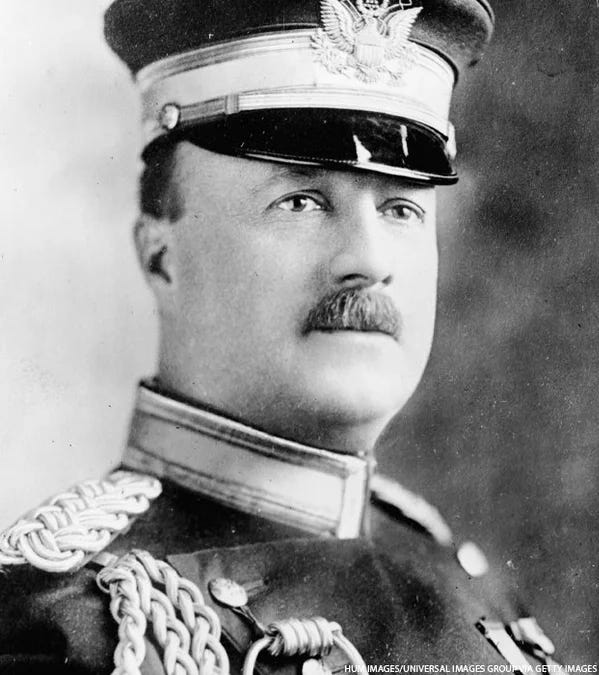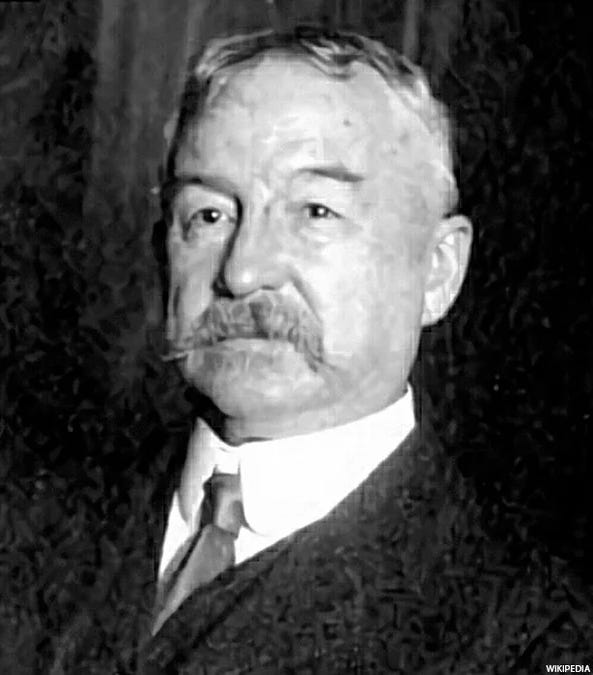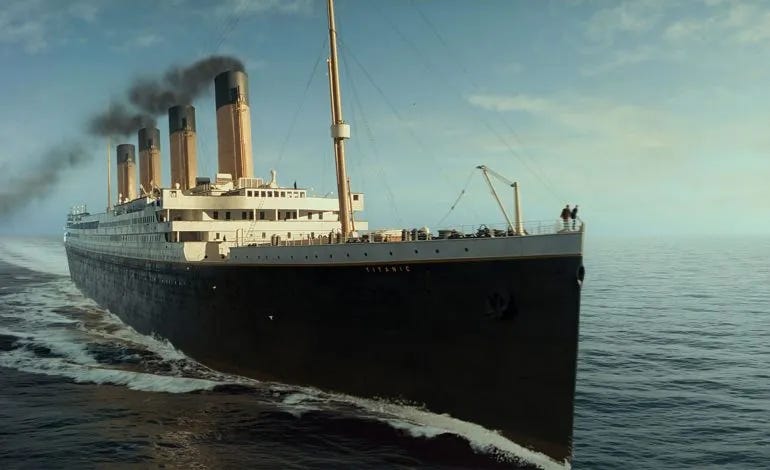Meet the Men Behind Titanic’s Hidden Gay Love Story
Exploring the rumored romance, its historical context, and the secrets lost beneath the surface.
Many of us think of the RMS Titanic as a grand symbol of the early 1900s—an opulent ocean liner beset by a tragic fate. Thanks to movies, novels, and documentaries, we picture swooning lovers on a doomed voyage. But one love story may have been kept out of the public eye: that of Army officer Archibald Butt and classical painter, writer, and sculptor Francis Davis Millet. The two men set off on a European vacation together, only to board the Titanic and never be seen alive again. While we can’t say for certain whether they were a couple, many historians and even the National Park Service now recognize the possibility that Butt and Millet shared more than just a close friendship.
Their World: Being Gay at the Dawn of the 20th Century
Before diving into the men’s relationship, let’s paint a picture of what it was like to be gay—or suspected of it—at the time:
Society’s View: Open homosexuality was risky business. In early 1900s America, and much of Europe, sodomy laws were on the books, and societal shame was heavy. People suspected of being gay risked social exile, legal punishment, or worse.
Code and Discretion: Those who were well-off or part of political and high-society circles often kept quiet about their relationships. Close companions sharing a home might get a “wink and a nod,” but it was never openly discussed.
“Boston Marriages” and Gentlemanly Friendships: If two women shared a house, it might be referred to as a “Boston marriage.” With men, people tended to shrug and say they were “close friends.” Especially among the elite, the unspoken rule was not to ask too many questions.
In this environment, it’s not surprising that Butt and Millet never publicly declared themselves a couple. Still, they lived together, threw lavish parties, and traveled in a cozy pair—even sharing a stateroom on their European voyage aboard the SS Berlin just weeks before they boarded the Titanic.


The Men: Archibald Butt & Francis Davis Millet
Archibald Willingham Butt had a formidable résumé:
A military officer who served as an aide to Presidents Theodore Roosevelt and William Howard Taft.
Known for his friendly demeanor and dedication to public service.
Never married, which raised eyebrows even in those times—particularly for a man of his status.
Francis Davis Millet was equally impressive:
A respected painter, sculptor, and writer with close ties to cultural heavyweights like Mark Twain and John Singer Sargent.
Although he was married to Elizabeth Merrill, they mostly lived separate lives. Millet even had an affair with travel journalist Charles Warren Stoddard, illustrating that he was no stranger to same-sex intimacy.
When Archibald Butt found himself stressed out by a brewing political spat between his two friends—Roosevelt and Taft—Millet stepped in with the perfect cure: a European holiday. It’s in this context that our two dashing gents sailed across the Atlantic for some well-needed R&R, sharing a stateroom on their outbound journey. After their sojourn, the pair boarded the Titanic to return home.
A Hypothetical Love Story
Romance & Emotional Intimacy
Given their backgrounds—Butt’s unwavering loyalty and Millet’s artistic flair—it’s easy to imagine them as affectionate, kindred spirits who found solace in one another. Perhaps their conversations over dinner glowed with mutual respect and admiration, with each man offering the other comfort from societal pressures.
Physical Affection & Sex Life
Hypothesizing about their private lives is a bit more delicate. Still, historical clues (like Millet’s known affair with Stoddard) suggest that physical intimacy between two men in that era, while risky, was not unheard of—especially in private, carefully curated spaces or when traveling abroad where they could be more discreet.
Who Topped and Who Bottomed? If we let our imaginations run playful and free: Butt, the disciplined military man, might have taken a more assertive role, while Millet—an artist used to shaping and molding—could have been equally comfortable expressing passion from a different angle. Yet sexuality isn’t always so black and white; they might have enjoyed a fluid dynamic, taking turns in a way that let both share power and vulnerability, especially given the trust they likely placed in each other.
Their “Don’t Ask, Don’t Tell” World: Even in private, men who loved men had to be ever watchful. Locked doors, hush-hush understanding among trusted friends, and coded language were essential for survival. Butt and Millet, if indeed they were lovers, would have navigated these waters with as much secrecy as necessary, carefully balancing the demands of public life with the yearnings of the heart.
Titanic’s Fateful Night: “Together in Death as in Life”
On April 10, 1912, Archibald Butt and Francis Davis Millet boarded the Titanic, bound for New York. Though they booked separate rooms this time—likely to maintain appearances—there’s reason to believe they spent a significant amount of time together on board.
When the Titanic struck an iceberg just before midnight on April 14, chaos ensued. Eyewitness accounts mention Butt bravely assisting women and children to lifeboats. Millet is said to have been seen on deck, calmly offering support to others. In the end, both men perished—some say side by side, others claiming their final moments remain unknown.
A Lasting Memorial
Their bond did not go unrecognized. Back on land, Washington insiders mourned them as “inseparable friends.” A fountain dedicated to them in Washington, D.C., still stands and is listed by the National Park Service as an LGBTQ+ memorial. Officially, it commemorates their service to the nation, but unofficially, it whispers of love and devotion.
Significance: A Titanic Loss & Gay History
The Titanic’s sinking was a worldwide tragedy claiming over 1,500 lives. Yet, the story of Butt and Millet adds a poignant LGBTQ+ footnote. It reminds us that queer history often flowed behind closed doors or through unspoken alliances, particularly in eras rife with intolerance. Their partnership—whether romantic, sexual, or an intricate blend of both—stands as a testament to the overlooked presence of gay men living, loving, and leaving their mark on history.
Today, we might celebrate their bravery, admire their devotion, and mourn the fact that they never got to step off the Titanic’s gangplank arm in arm. Perhaps, as some historians suggest, their final embrace was just out of sight—lost beneath the sea but not forgotten by those who cherish LGBTQ+ pioneers.
The Legacy of Their Love (Real or Rumored)
Butt and Millet’s tale is a compelling chapter in the Titanic saga—and an under appreciated slice of queer history. Their story nudges us to wonder: How many other romances were brushed aside by society’s disapproval and the veil of discretion? By exploring their lives and contributions, we honor not just their memory, but the countless other LGBTQ+ figures whose voices were muted by the social mores of their day.
For all we know, Archibald Butt and Francis Davis Millet may have shared a love story as epic as any Hollywood script—and one that ended far too soon in the freezing North Atlantic. As the decades pass, their bond continues to spark curiosity and imagination, reminding us that sometimes the truest and most enduring romances are the ones that history tries to hide.






